llistat de metadades
Author
Director
Hulst, Niek van
Codirector
Wozniak, Pawel
Date of defense
2022-10-28
Pages
116 p.
Department/Institute
Universitat Politècnica de Catalunya. Institut de Ciències Fotòniques
Doctorate programs
DOCTORAT EN FOTÒNICA (Pla 2013)
Abstract
(English) The growth of technology and climate change have increased the need for more efficient, biodegradable and ecologically sustainable electronic devices. With this in mind, different methods have emerged to improve the performance of organic materials. In particular, the union of plasmonic nanostructures with quantum emitters marked a new line of device research. The interaction between plasmons and quantum emitters led to the modification of the chemical properties of quantum emitters, which helped improve the absorption and emission capabilities of molecules. However, despite the efforts employed, reliable platforms to study the interaction between plasmons and molecules reproducibly have not yet been developed. This thesis aims to increase the interaction strength between plasmonic structures and organic molecules in a reproducible fashion by varying the optical properties of metallic structures. A fluorescent dye and a protein belonging to a photosynthetic bacterium were chosen as the systems to study. Consequently, the properties of the structures were tailored to obtain the desired optical response that matched the molecules/protein of interest. Mainly, the plasmonic structures' material, shape and size served to modify the resonance frequency and intensity of the near-field of the plasmon. In particular, this thesis investigated the plasmon interaction volume's effect on achieving and increasing the coupling strength. Fabrication of antennas by lithography, thermal evaporation, and helium ion milling allowed these properties to be modified. Nanorod dimer fabrication decreased the modal volume to less than 10 nm resolution. Characterising the structures was very important since the fine-tuning of the dimers led to different results. Here, darkfield confocal microscopy was used to analyse the plasmonic dimers' spectral response. In addition, finite difference time domain (FDTD) simulations provided information on the near-field strength in the dimer feeding space. Later, the molecules to the nanoantennas extended the study to coupled systems. Some systems showed a strong interaction between the dimers and the molecules/protein, which was identified by the mode splitting of the scattering spectra, the dispersion relation, and a comparison between coupling strength and individual system losses.
(Español) El crecimiento de la tecnología y el cambio climático han aumentado la necesidad de dispositivos electrónicos más eficientes, biodegradables y ecológicamente sostenibles. Con esto en mente, han surgido diferentes métodos para mejorar el rendimiento usando materiales orgánicos. En particular, la unión de nanoestructuras plasmónicas con emisores cuánticos marcó una nueva línea de investigación para dispositivos plasmónicos. La interacción entre los plasmones y los emisores cuánticos condujo a la modificación de las propiedades químicas de los emisores cuánticos, lo que ayudó a mejorar las capacidades de absorción y emisión de las moléculas. Sin embargo, a pesar de los esfuerzos realizados, aún no se han desarrollado plataformas o métodos confiables para estudiar la interacción entre plasmones y moléculas de manera reproducible. Esta tesis tiene como objetivo aumentar la fuerza de interacción entre estructuras plasmónicas y moléculas orgánicas de forma reproducible variando las propiedades ópticas de las estructuras metálicas. Se eligieron como sistemas a estudiar un colorante fluorescente y una proteína perteneciente a una bacteria fotosintética. En consecuencia, las propiedades de las estructuras se adaptaron para obtener la respuesta óptica deseada que coincidiera con las moléculas/proteínas de interés. Principalmente, el material, la forma y el tamaño de las estructuras plasmónicas sirvieron para modificar la frecuencia de resonancia y la intensidad del campo cercano del plasmón. En particular, esta tesis investigó el efecto del volumen de interacción del plasmón para lograr y aumentar la fuerza de acoplamiento. La fabricación de antenas por litografía, evaporación térmica y molienda de iones de helio permitió modificar estas propiedades. La fabricación de dímeros de nanovarillas disminuyó el volumen modal a menos de 10 nm de resolución. La caracterización de las estructuras fue muy importante ya que el ajuste fino de los dímeros condujo a resultados diferentes. Aquí, se utilizó microscopía confocal de campo oscuro para analizar la respuesta espectral de los dímeros plasmónicos. Además, las simulaciones de dominio de tiempo de diferencia finita (FDTD) proporcionaron información sobre la intensidad de campo cercano en el espacio de alimentación del dímero. Más tarde, las moléculas de las nanoantenas ampliaron el estudio a los sistemas acoplados. Algunos sistemas mostraron una fuerte interacción entre los dímeros y las moléculas/proteína, que se identificó mediante la división del modo de los espectros de dispersión, la relación de dispersión y una comparación entre la fuerza de acoplamiento y las pérdidas del sistema individual.
Subjects
535 - Òptica



